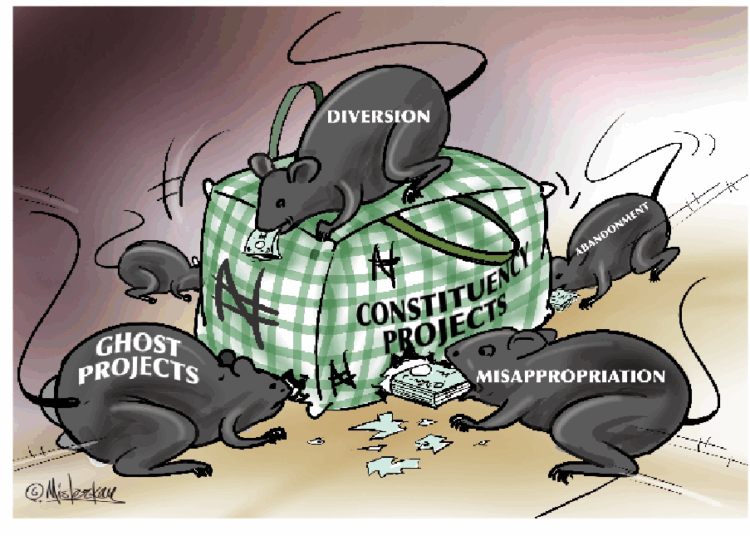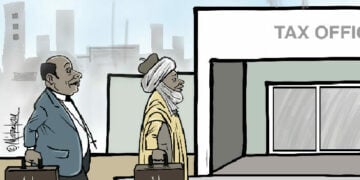Recently, Agora Policy, a think tank, resuscitated what Nigerians have been discussing at different levels, albeit with varied passion: reforming the constituency projects scheme. In a detailed report, Agora Policy affirmed what Nigerians have known for a long time: that the scheme is flawed and susceptible to abuse.
Constituency Projects, or Zonal Intervention Projects, are development initiatives funded from the budget to address specific needs in different constituencies nationwide. The intention is to ensure equitable distribution of resources and infrastructure development across the country.
Because they are constituency-focused, lawmakers propose the projects, and various government agencies are supposed to implement them. Plausible as the initiative sounds, it has been abused.
Same old story
Since 1999, when the National Assembly, with the tacit support of the executive, institutionalised the constituency projects scheme, one thing that has consistently defined it is misuse by lawmakers. Nothing has changed, and nothing ever will if things continue as they currently are.
To say the scheme is flawed and riddled with abuse is to say the least in the mildest way – an understatement. It is one of the many things that portray the National Assembly as self-serving. Whether one takes the opaque procurement process, the hoarding, politicisation, or the delivery of substandard work, everything about the constituency project scheme reeks of corruption.
The vexed issue of budget padding, which has, in a way, been legalised by the national assembly, revolves around the constituency projects scheme. Through this scheme, lawmakers often insert projects into the budget to attract development projects to their constituents.
For the 2025 budget alone, BudgIT, a civic-tech organisation advocating for budget transparency, revealed that the National Assembly inserted over 11,000 projects valued at N6.93 trillion.
Like most Nigerians, I am concerned that these 11,000 projects will go the way of the previous constituency projects-inflated figures, unclear procurement process, abandoned or poorly executed, and allocated even at the constituencies, based on political patronage.
As Agora Policy rightly stated, the constituency projects scheme has become “a vehicle for patronage politics, poor fiscal governance, and conflict of interest.” Both the executive and legislators are complicit in this.
Infractions writ large
Fundamentally, the constituency projects scheme is riddled with different infractions, including suspicious projects that are not traceable. For instance, lawmakers often claim they provided empowerment training to their constituents. More often than not, it is difficult to identify those purportedly trained.
Similarly, hiding under the guise of constituency projects, lawmakers insert projects into the budgets of some ministries, departments, and agencies that are clearly outside the mandates of such MDAs. It is, therefore, not uncommon to see the provision for procurement and distribution of wheelbarrows, for instance, under the budget of an educational institution.
There are provisions for classrooms, installation of solar lights, construction of a civic centre, training of hairdressers, and laying of interlocking stones in the Ministry of Agriculture and Food Security’s 2025 budget. Undoubtedly, lawmakers inserted these projects into the budget.
Legislators usually allocate huge funds for projects and manage them, mostly through their proxies. The sad reality is that lawmakers have turned constituency projects into conduit pipes and an avenue for self-enrichment, where sleaze and shabby project execution are the defining features.
This, among many other reasons, makes it imperative for the nation to urgently reform or outrightly abolish the constituency project scheme.
ICPC’s confirmation
A plethora of reports by the Independent Corrupt Practices Commission (ICPC) expose the rampant abuse of the constituency project scheme, including ghost projects, abandonment, diversion and misappropriation of allocated funds.
In 2019, the ICPC claimed it recovered a dialysis machine, an ECG monitor, an oxygen regulator, anaesthetic machines, generators, and other hospital equipment meant for a cottage hospital in Ukana, Essien Udim Local Government Area of Akwa Ibom State, from the premises of a Foundation allegedly belonging to the current Senate President.
According to ICPC’s Constituency and Executive Projects Tracking Initiative (CEPTI) report, some intervention agencies routinely hand over empowerment items to political stakeholders instead of directly distributing them to beneficiaries.
Like all the discussions around the constituency project scheme, the Agora report has brought to the fore, yet again, the need to review the scheme critically. Should Nigeria continue to retain or abolish the scheme? Is there a way of insulating it from the rampant corruption that has dogged it over the years?
Reform as a way out
Despite all the concerns about corruption and abuse of the constituency project scheme, outright abolition may not be possible because the lawmakers who are the key beneficiaries will frustrate any effort to bring it to fruition. It appears the nation is in a catch-22 situation.
Since abolishing the constituency projects is almost impossible, concrete measures should be introduced limiting lawmakers’ involvement to determining projects to be captured under the scheme. Their intervention should begin and end by providing a list of projects under the scheme.
The Bureau of Public Procurement should be actively involved in the procurement process to allow for the selection of competent contractors, not the current process in which lawmakers insist on having only their proxies as contractors.
Above all, the anti-graft agencies must beam their searchlights on the contracting firms handling these constituency projects. Nigeria cannot afford to have the constituency project scheme subjected to monumental abuse.
Yet Another Programme
This week, President Bola Ahmed Tinubu formally launched the Renewed Hope Agricultural Mechanisation Programme with a pledge to transform Nigeria’s agricultural sector to ensure national food security. Listening to the president make his speech, I couldn’t help but yield to a mood of deepening pessimism that overwhelmed me.
The government’s much-taunted Renewed Hope Agenda has turned out to be Renewed Hopelessness, pure and simple. Halfway into his four-year tenure, no sector has received deserved attention. Security is a mess. Health is in a deplorable state—nothing tangible in the housing sector.
To understand how the agricultural sector fared, check the statistics on food production and the number of Nigerians struggling to survive the exorbitant prices of foodstuffs. Even though the government has commissioned 2,000 tractors, I, like most Nigerians, have serious reservations about the programme not going the way of previous ones.
There was the Agricultural Promotion Policy, the Agricultural Transformation Agenda, the National Agricultural Technology and Innovation Policy, the Anchor Borrowers Programme and many others. Yet, the nation still experiences poor food production and relies heavily on imports. It is clear that the problem is not in the multiplicity of policies but in dutiful implementation.





